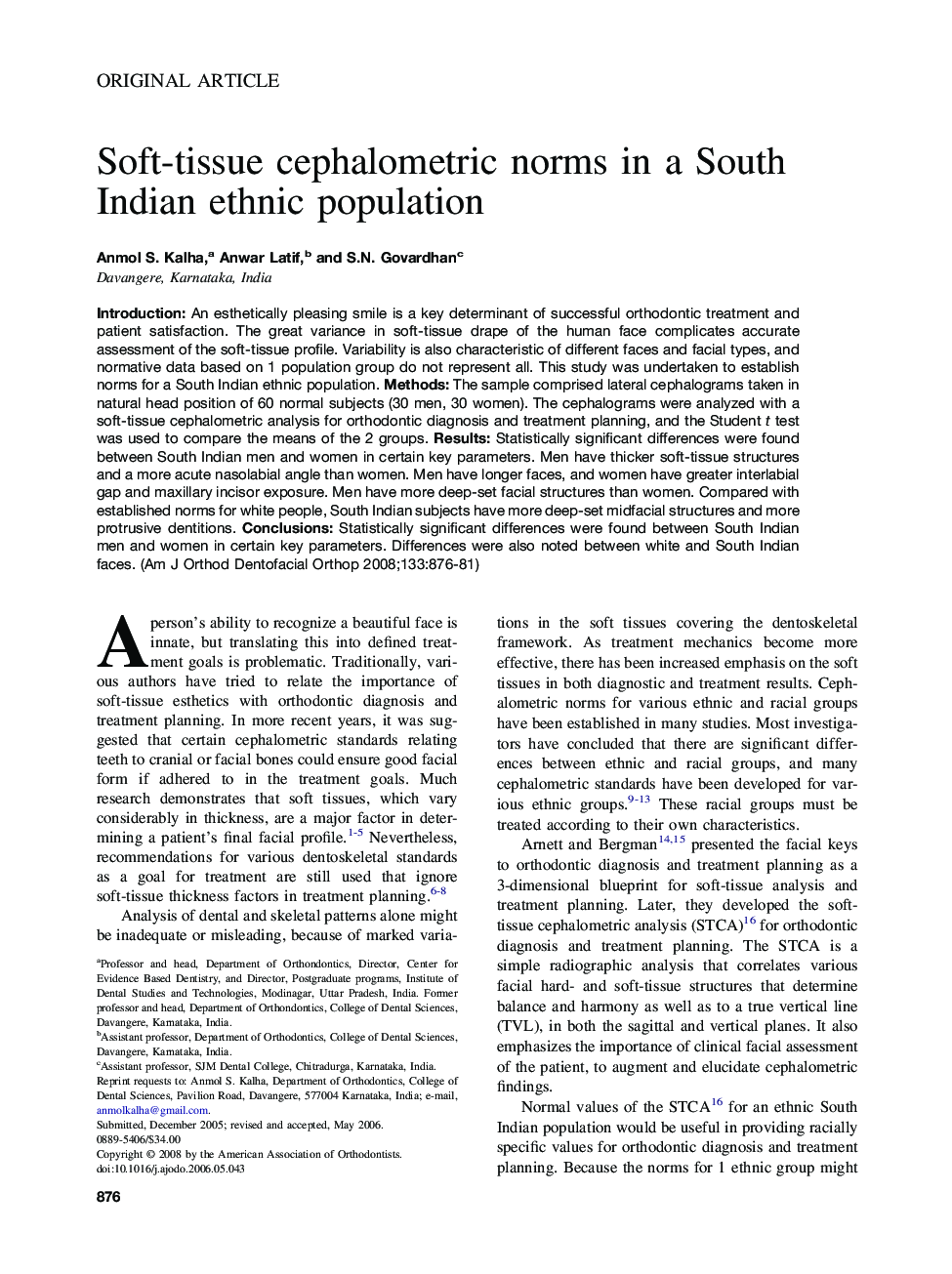| Article ID | Journal | Published Year | Pages | File Type |
|---|---|---|---|---|
| 3119098 | American Journal of Orthodontics and Dentofacial Orthopedics | 2008 | 6 Pages |
Introduction:An esthetically pleasing smile is a key determinant of successful orthodontic treatment and patient satisfaction. The great variance in soft-tissue drape of the human face complicates accurate assessment of the soft-tissue profile. Variability is also characteristic of different faces and facial types, and normative data based on 1 population group do not represent all. This study was undertaken to establish norms for a South Indian ethnic population. Methods:The sample comprised lateral cephalograms taken in natural head position of 60 normal subjects (30 men, 30 women). The cephalograms were analyzed with a soft-tissue cephalometric analysis for orthodontic diagnosis and treatment planning, and the Student t test was used to compare the means of the 2 groups. Results:Statistically significant differences were found between South Indian men and women in certain key parameters. Men have thicker soft-tissue structures and a more acute nasolabial angle than women. Men have longer faces, and women have greater interlabial gap and maxillary incisor exposure. Men have more deep-set facial structures than women. Compared with established norms for white people, South Indian subjects have more deep-set midfacial structures and more protrusive dentitions. Conclusions:Statistically significant differences were found between South Indian men and women in certain key parameters. Differences were also noted between white and South Indian faces.
